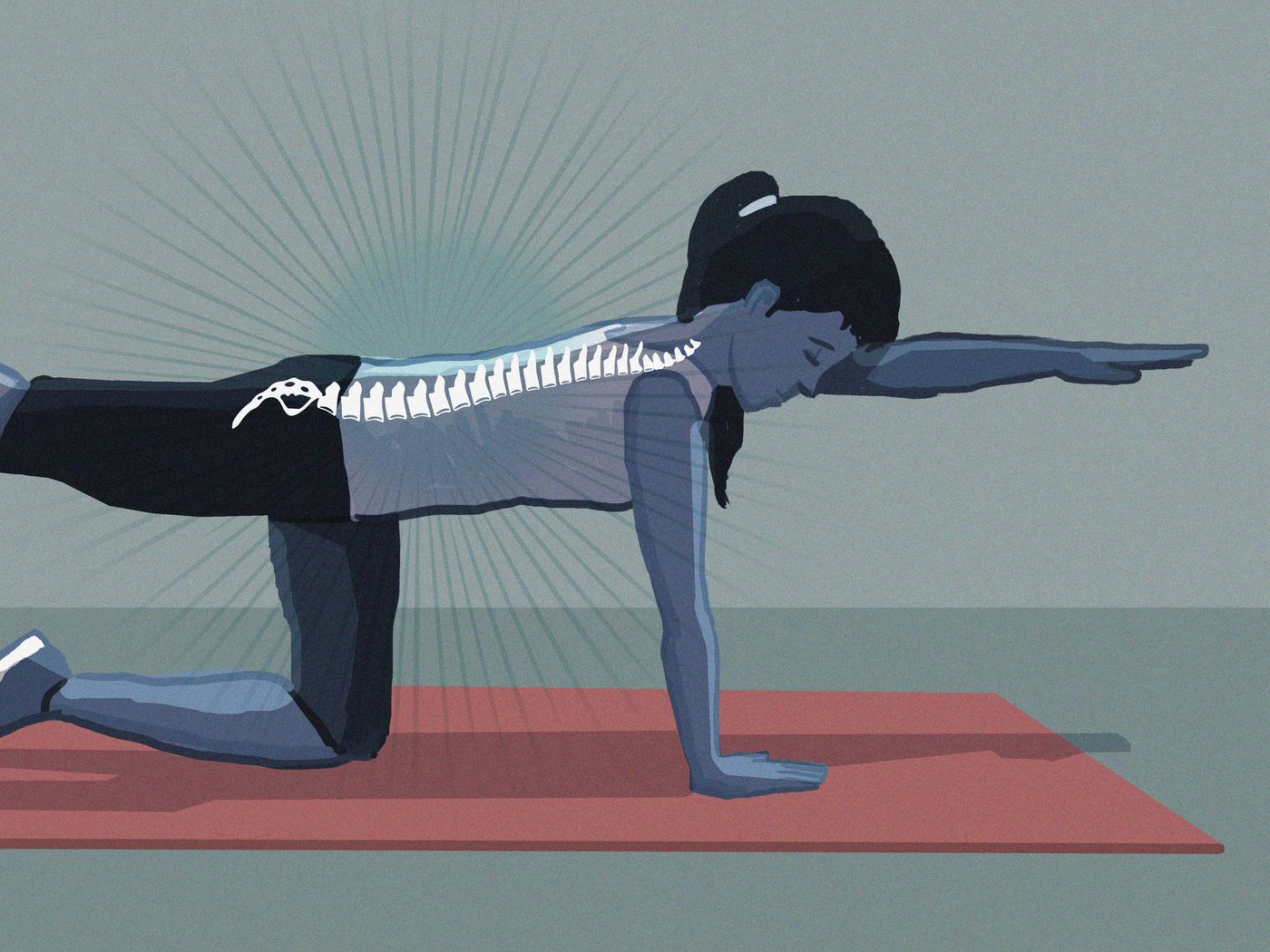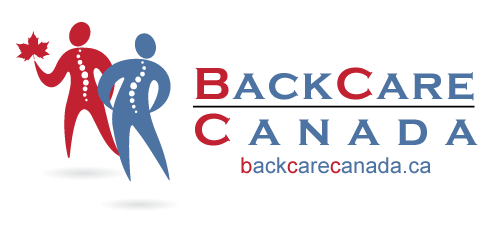Low Back Pain
Must Watch Video
Please watch this important video for a great summary on low back pain:
WHAT IS 'LOW BACK PAIN'?
Lower back pain is so common that almost everyone will experience it at some point in their lives. Some people are unfortunately experience many episodes of recurrent low back pain throughout their lives.
The information here is all about the very common “Musculoskeletal Lower Back Pain”. That is, low back pain caused by the many muscles, joints, ligaments, discs and nerves that are in your back. The medical term for is “Mechanical Lower Back Pain”.
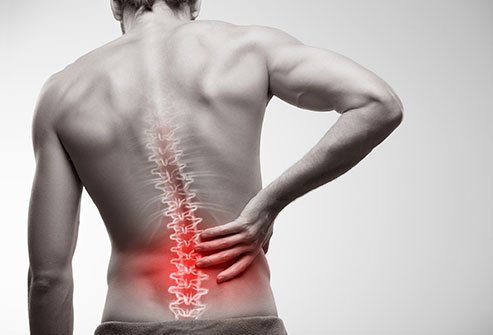
WHAT CAUSES LOW BACK PAIN?
Our lower backs are made up of many bones (including our spine and pelvis), and then many muscles and ligaments that connect everything together. There are also nerves and joints within the lower back.
Any one of these areas or parts can become strained or irritated. Often, it’s a combination of them. Most often it is impossible to tell which specific part is causing the pain.
It is common to get low back pain without any known particular injury.
The good news is that we don’t have to know precisely what nerve, or what joint, or what muscle is causing the pain.
Because regardless of the cause, the treatments are generally all the same!
PAIN IN THE 'HIP', BUTTOCKS, or LEGS:
Often people will say, “It’s not my back, it’s my hip.” Then they point to the OUTER hip area where it hurts.
In medical terms, this is still called “Low Back Pain”.
“Low Back Pain” is not just pain in the classic lower back. It also includes pain the outer “hip” area, or the buttocks areas, or even pain down the thigh and leg. All of this pain is still associated with the muscles and joints and nerves in the Lower Back.
The true “hip” joint is actually located more in the inner groin, inner thigh area. So, pain from hip arthritis, is actually felt more in the inner groin.
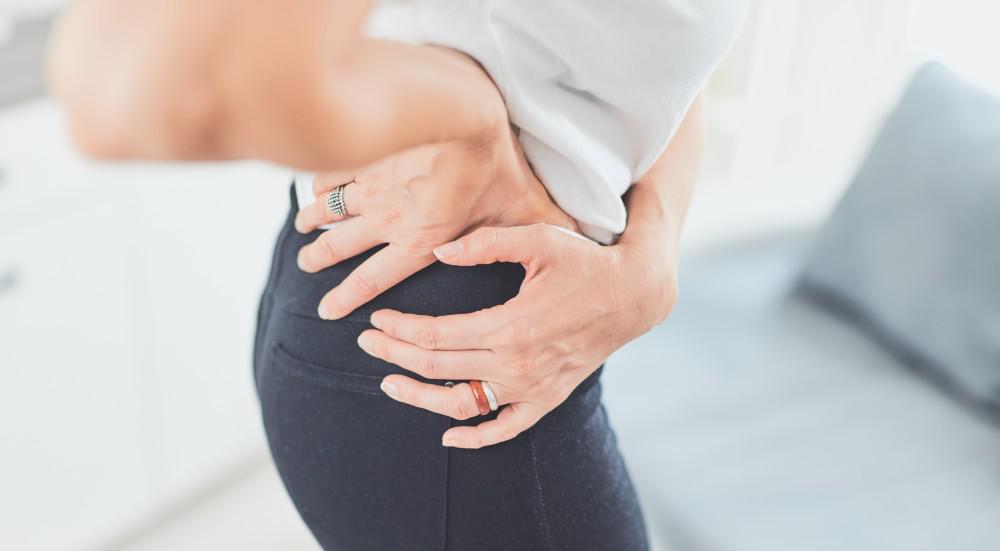

WHAT ABOUT BLADDER INFECTIONS AND KIDNEYS?
Many people feel that because they have pain in their lower or side backs, that it could be a “bladder infection” or their “kidneys”. This is most often not the case.
If your lower back pain hurts when you move or change position, that’s almost always “musculoskeletal” back pain (i.e. caused by muscles and joints).
Bladder infections would be most associated with urinary symptoms like pain and burning with urination. So, if there’s none of that, it’s not likely to be a bladder or kidney infection.
And kidney stone pain is severe spams of pain, randomly and sporadically, regardless of movement of position. Including at rest. So again, if your pain is caused by moving and certain positions, but not spasming at rest, it’s likely not your kidneys.
THE 4 PATTERNS OF LOWER BACK PAIN
As mentioned above, we often cannot tell precisely what parts or area of the back is causing the pain, but the good news is that we don’t have to.
Regardless of what specific part is hurting, Lower Back Pain generally falls into one of these 4 Categories, or “Patterns”:
Pattern 1:
-
Pain is located mainly in the LOWER BACK and/or BUTTOCKS area. It may also spread to the legs, but the worst pain is from the lower buttocks or higher.
-
Pain is made WORSE bending FORWARD.
Pattern 2:
-
Pain is located mainly in the LOWER BACK and/or BUTTOCKS area. It may also spread to the legs, but the worst pain is from the lower buttocks or higher.
-
Pain is WORSE extending BACKWARD. It usually feels better to bend forward.
Pattern 3:
-
Pain is located mainly in the LEGS. i.e. below the lower buttocks. You may also feel pain in the lower back area, but the worst pain is in the thigh or lower.
-
Pain is CONSTANT. It never completely goes away despite your position.
-
Pain is made WORSE bending FORWARD.
Pattern 4:
-
Pain is located mainly in the LEGS. i.e. below the lower buttocks. You may also feel pain in the lower back area, but the worst pain is in the thigh or lower.
-
Pain is made WORSE extending BACKWARD. (i.e. walking down a hill)
-
Pain IMPROVES when you bend forward. (example, leaning forward on a shopping cart or walking up a hill).
* Note: Patterns 1 & 2 are worse in the lower BACK and/or BUTTOCKS, whereas Patterns 3 & 4 are worse in the LEGS.
See below in the “What Can You Do To Get Better?” section.
There are handouts for each specific Pattern that show specific stretches and positions you can do at home.
'DO I NEED AN X-RAY OR MRI?'
People often feel they need an x-ray or MRI or CT scan to help determine what is causing their back pain.
X-rays, CT scans, or MRIs are NOT helpful for low back pain!
In fact, medical guidelines suggest NOT ordering them!
There are multiple reasons for this:
“Coincidental” Findings:
Pictures of your back will show findings that are not even causing your pain.
Seeing “Degenerative Discs” on an xray, or a “Bulged Disc” on an MRI are completely normal findings to see, even in people WITHOUT any back pain!
So, seeing them on your xray or MRI does not mean they are causing your pain. So, the results are misleading.
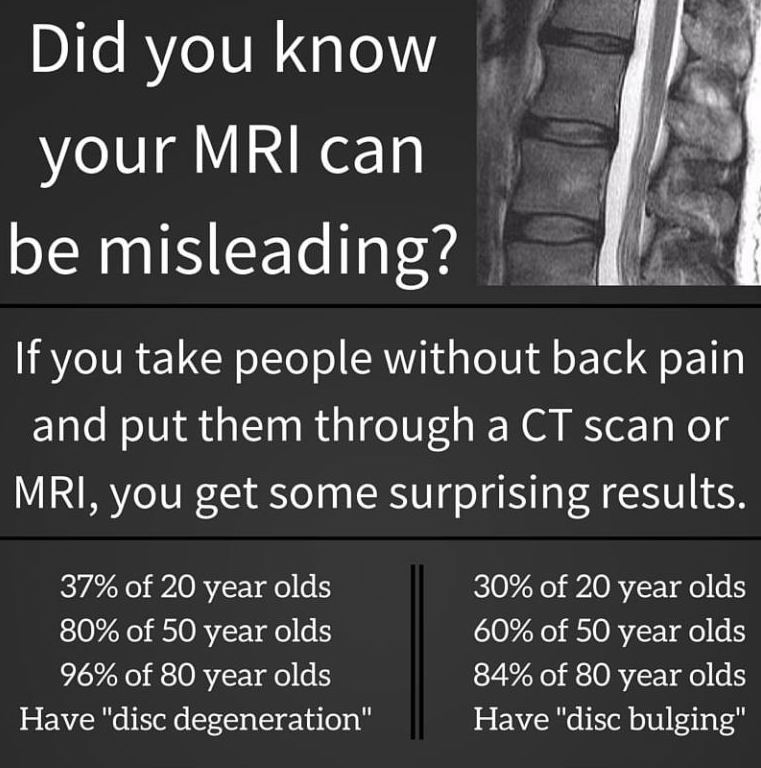
The Results Will Not Change the Treatment Plan:
Regardless of what an x-ray or MRI shows, it does not change the recommended treatments.
The first line treatments for low back pain are all the same: stay active, physiotherapy, yoga, medications (see below for more information on treatment suggestions).
They Cause More HARM than Good:
X-rays, CT scans, and MRIs cause more harm than good! Scientific studies have proven that people who get MRIs for their back do WORSE and take longer to heal!
How could this be?
First of all, x-rays and CT scans expose your body to needless radiation.
But more importantly, getting these tests changes patients attitudes and outlook regarding their back pain. Remember how it is NORMAL to see “degenerative discs” or “bulged discs”? Well, many people who hear this end up believing something is “wrong” with their backs – even though these findings are coincidental and not even the cause of their pain.
People often end up believing they have a “bad back” or a “disease” that is forever wrong with them. This changes their attitude and their belief that things will never improve. It comes back to the old “mind of matter” saying.
If someone believes they will never get better, they won’t.
If someone understands that back pain is “normal” and always gets better, regardless of the cause, they will get better faster.
WHAT CAN YOU DO TO GET BETTER?
MEDICATIONS:
TYLENOL (ACETAMINOPHEN) is generally very safe to take, up to 1000mg (2 Extra Strength 500mg pills) taken up to four times daily.
ANTI-INFLAMMATORIES (like Advil, Motrin, Aleve, or Naproxen) can be very helpful. (But some people who take certain blood pressure medications, or people with kidney problems or stomach ulcers should avoid anti-inflammatory medications. Be sure to check with your pharmacist or doctor if you are not sure).
VOLTAREN CREAM or GEL – this is a type of anti-inflammatory cream or gel that you can rub on your sore areas. Even if you cannot take anti-inflammatory pills, this is generally safe and minimal side effects. Some people find this very helpful, but some people do not. This is not covered by drug plans, so no prescription from a doctor is required. It is available over-the-counter at pharmacies.
MUSCLE RELAXERS can be bought over-the-counter. Some people find these helpful. Be careful because they can be sedating for many people. So, do not drive or take these before work. Muscle relaxers are okay short term for a few nights, but are not really meant to take long term.
ACTIVITY AND MOVEMENT:
Studies clearly show that the more people stay active and move around, the faster they recover from back pain. Many years ago, doctors used to recommend bed rest for back pain but people did worse!
So, as much as tolerated, stay active. Walk around. Do light chores. Don’t try to go train for a marathon, but stay active!
PAIN does not mean HARM.
Some people are afraid to stay active because they are worried they will cause more harm.
Again, studies show this is not true. Staying active does NOT cause harm. In fact, it helps make things BETTER.
PHYSIOTHERAPY OR MASSAGE:
One of the most important suggestions for severe or recurrent low back pain is to try seeing a physiotherapist of massage therapist.
Think of physiotherapists as “back pain experts.” They can help diagnose your back pain and give you specific advice for home exercises and stretches.
In fact, most people with low back pain should be going to see a physiotherapist before needing to come see a doctor.
Stretches and Comfortable Positions:
Depending on which of the 4 Patterns of back pain you have, different stretches and positions can be helpful. (See above for the descriptions of the 4 Patterns).
Please see the following handouts for things you can try at home:
YOGA:
Yoga can be a miracle for helping back pain – and preventing it! It helps you stretch and build core muscle strength in ways you would not be typically moving. It’s one of the few proven things that can help low back pain!
Now, you don’t have to a professional gymnast or super-flexible to do yoga. ANYONE CAN AND SHOULD DO YOGA!
If you search YouTube for yoga exercises, you will find hundreds of free options to try. Try searching for things like, “beginner yoga for back pain” or “beginner yoga for the elderly”. You’ll be able to find basic stretches and movements that will get you going.
You can search for 10 minute videos or 15 minutes, or 30 minutes. Whatever you prefer.
TRY THIS EXPERIMENT: Try doing at least 10-15 minutes of yoga every day for two weeks, and see how you feel after!
HOW LONG WILL IT TAKE TO GET BETTER?
The good news is most back pain will get better with time, regardless of what you do. You should still try all of the advice above to help speed up recovery, though.
Most back pain will gradually improve within a couple of weeks.
And 90% of back pain will resolve within 3 months. Most back pain doesn’t last that long, thankfully! But the point is, it always tends to get better.
'DO I NEED A REFERRAL TO A SPECIALIST?'
People often feel they may need a referral to specialist, especially if they get frequent, recurrent back pains.
The “back pain specialist” you need to see is a PHYSIOTHERAPIST (as suggested above). Think of physiotherapists as “muscle and joint experts” who can help diagnose your problem and help you fix it.
Medical Doctor back pain specialists are surgeons. You only need to see them if you have a specific condition that requires spinal surgery or spinal injections. Situations like this are exceptionally rare. For the vast majority of patients who have ever been referred to a spinal surgeon, most often the surgeon recommends: AGAINST surgery and SEE A PHYSIOTHERAPIST instead.
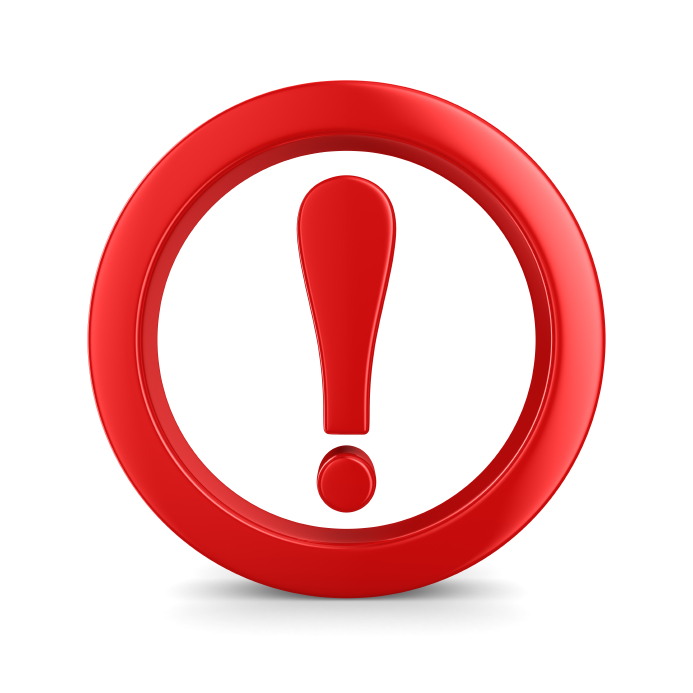
REASONS TO SEE A DOCTOR ('Red Flags'):
-
If your pain started with a big fall or accident and you fear a bone may be broken.
-
New trouble urinating (since your back pain started).
-
New leakage or incontinence of bowels (since your back pain started).
-
Numbness around your genitals.
-
Weakness in your legs (NOTE: this refers to a true decrease in power, not just “weakness because of the pain).
-
Persisting fever with back pain
-
History of IV drug use.
-
Unexplained weight loss.
-
Drenching night sweats (bad enough you have to change your clothing).
-
History of cancer (prostate, breast, or lung)
-
Your pain is constant over many weeks or months, even during the night or with rest.

